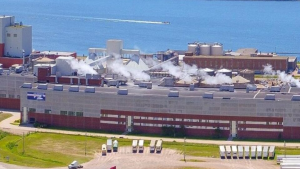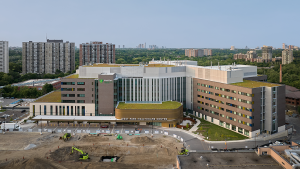The CEO of the Canada Infrastructure Bank (CIB) insists the bank’s first investment, in Montreal’s REM transit project, ticks all the boxes in its mandate despite the fact its loan guarantee was issued well after the project was launched.
Critics have charged the timing of the REM financing announcement means the CIB failed to achieve its “core purpose” as stated in a recent minister’s mandate letter of “attracting private sector and institutional investment to expand the scope of public infrastructure investment in Canada.”
The CIB, launched by the federal government in 2017, announced Aug. 22 it would support the $6.3-billion REM project with a $1.28-billion secured loan. The Caisse de depot’s CDPQ Infra and the Government of Quebec are the other two main investors with commitments of $2.95 billion and $1.28 billion respectively.
The CIB support replaces a federal pledge of the same amount made in June 2017. It was a point noted by Residential and Civil Construction Alliance of Ontario executive director Andy Manahan, who expressed disappointment in the CIB move, recently calling it a “repackaged loan.”
CIB CEO Pierre Lavallee, appointed in May, said the REM was a good first investment for several reasons, one of which is that it gets the bank’s first project onto its books to showcase to other potential investors, creating momentum.
“The first criteria we look at for investing is, it’s got to fit within our mandate,” he said. “That’s for us to invest $35 billion in new revenue-generating infrastructure that is built in the public interest and attract private capital within our principal areas of focus — urban transit, trade and transportation infrastructure, and green infrastructure.
“And the REM ticks all the boxes.”
Pressed on the timing of investment, made on a project already under construction thus not seed funding, Lavallee noted the CIB has just been launched and has to start somewhere, and said, “I am hearing that to attract private capital means something where there was no private capital when we showed up. I would debate that in the sense that our investment is allowing to complete the financing of the project, which will allow the private capital to be deployed.
“There is a bit of a timing question underlying this, ‘why this one now, or why would we get involved when the project was already relatively developed,’ which is a fair statement, and that is in part due to the fact that we have just been put in place.
“Some projects are in various stages of development. That one was relatively advanced but not complete, and I think that because the project met the mandate of the bank, it made sense to the bank to look and see if there is something that we could do.”
He said future projects that could be supported include situations where a private proponent is developing a project but asks for the CIB to become involved because there is not enough support in the private sector, and also where “a public proponent would say, we think we have a project, and they come to the bank and say help us develop the project in a way such that we can together attract private capital to build new infrastructure with us.”
Ideally, Lavallee said, private sector proponents will come to the CIB early enough that the partners can develop the project together.
Addressing project revenues, Lavallee said the CIB is looking to invest in projects with “sustainable” revenue generation that can provide returns to the private investors. He acknowledged most municipal transit projects like the REM require ongoing government support but said the CIB would not want to invest in projects where there are periodic grants, but rather, “What we are looking for in terms of sustainability, one element of sustainable, it must be connected to usage.”
Lavallee, who came to the CIB following a stint as senior managing director and global head of investment partnerships at the Canada Pension Plan Investment Board, said he would not give in to “artificial deadlines,” responding to inquiries asking whether the next project would be announced by the end of 2018 or in the next six months.
He referred to the continuing need to “build a team,” to work with potential project proponents and also to establish the CIB as a centre of infrastructure excellence.
On the latter goal, he said, “We are currently recruiting for those positions that will be at the nexus of understanding of what our priorities are and what might fit into our mandate and also look to best practices within and outside of Canada and bring those to bear into our thinking and our project structure and so on. And part of that is an advisory role we will have with all levels of government.”
Lavallee said CIB officials have been active attending conferences inside and outside Canada to get the word out that the CIB is looking for partners to engage in new infrastructure projects in Canada, and that process will continue.











Recent Comments
comments for this post are closed